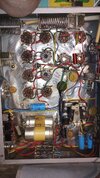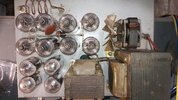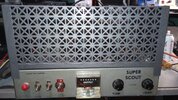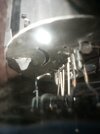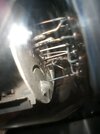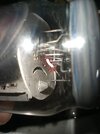Hi all,
I got a 12 tube, 4x8, super scout. I think it's a sos brand, not sure. Looks pretty good under the hood, but doesn't work. Putting 4 watts in gets 4 watts out, regardless of hi/low switch. Both relays make contact when keyed.
Was told it was working fine, until a spark was observed near the tubes, at which point the output dropped to nil and the plates cherried up. The operator was probably driving the snot out of it at the time tbh. :sigh: I can't see evidence of a spark under the hood, but could have been arcing inside the tube i suppose.
So does anyone know what voltage the hv trans puts out? I cant see the capacitance-voltage multiplier values to figure it, and I have a gut feeling the hv transformer is shot. Any other info would be appreciated as well. I'm in no hurry with this thing. Thanks for looking.
I got a 12 tube, 4x8, super scout. I think it's a sos brand, not sure. Looks pretty good under the hood, but doesn't work. Putting 4 watts in gets 4 watts out, regardless of hi/low switch. Both relays make contact when keyed.
Was told it was working fine, until a spark was observed near the tubes, at which point the output dropped to nil and the plates cherried up. The operator was probably driving the snot out of it at the time tbh. :sigh: I can't see evidence of a spark under the hood, but could have been arcing inside the tube i suppose.
So does anyone know what voltage the hv trans puts out? I cant see the capacitance-voltage multiplier values to figure it, and I have a gut feeling the hv transformer is shot. Any other info would be appreciated as well. I'm in no hurry with this thing. Thanks for looking.


